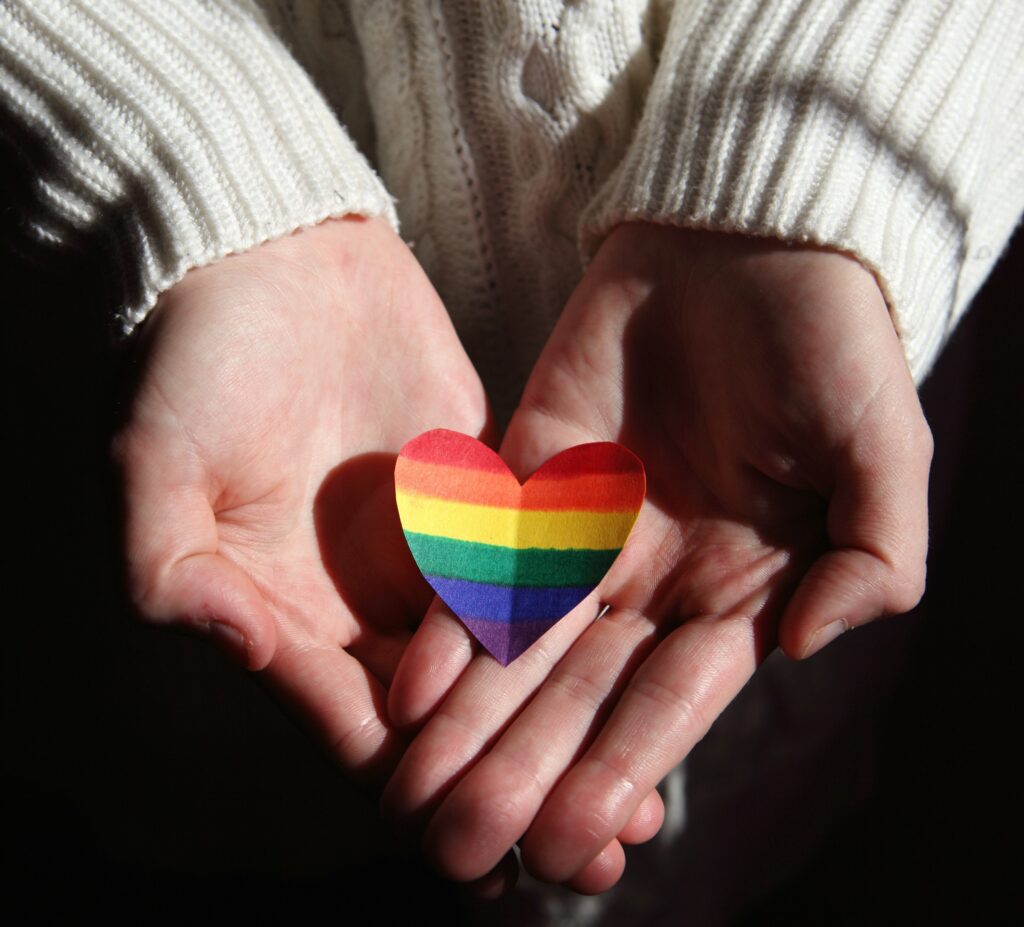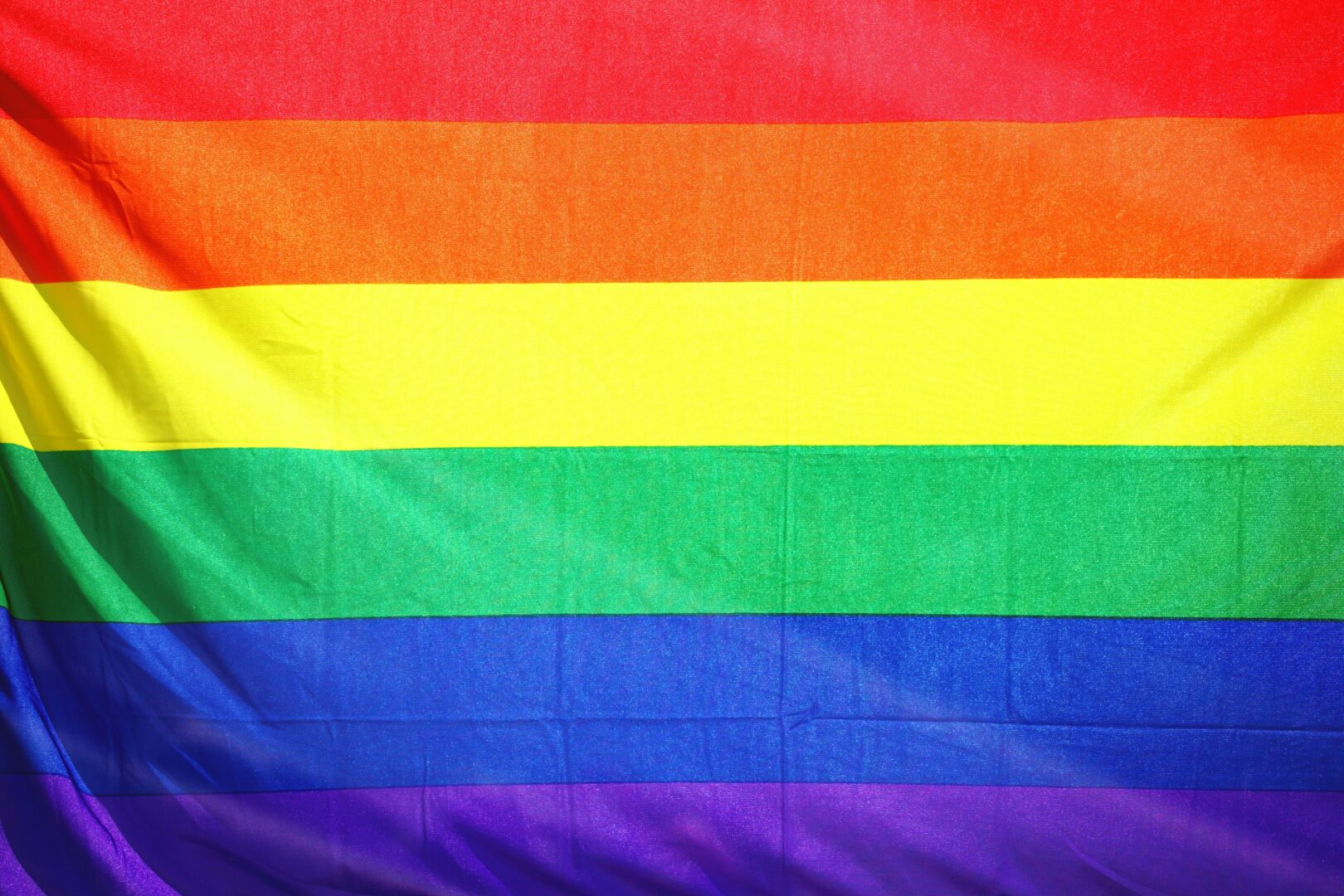Grieving the death of someone important to us is a painful and isolating experience. Other people rarely “get it” and sometimes don’t even want us to talk about it around them. Finding a sense of belonging, community, and understanding in your grief is often what makes it feel survivable.
But what if there are other parts of your identity that your family, peers, and community already don’t understand or accept?
Complex feelings on two fronts
When someone is grieving a death and also belongs to the LGBTQIA+ community, they have to cope with complex layers of stigma, isolation, rejection, and invisibility on two fronts.
Add to this the reality that death is not always the only loss LGBTQIA+ people are grieving. As a result of societal prejudice against this community, the majority of queer-identifying people experience both individual and community-level grief and loss throughout their lives (i.e rejection from family members and society, shaming, bullying and discrimination, reduced access to support systems, etc.).
Their experience of “systemic grief” (grief that results from the marginalization experienced over a lifetime) often starts before they even experience the death of someone important to them. This makes the bereavement process even more painful and complicated.

There are basic adjustments we can make to ensure that queer kids feel safe and supported.
Four ways to support our LGBTQIA+ community
Research shows that when LGBTQIA+ people, especially kids, have access to affirming and supportive spaces and relationships, it serves as protection against the oppression and increased risks they experience. We can create those safe spaces by working intentionally to show up in affirming and inclusive ways. When LGBTQIA+ kids know that those parts of their identity are loved and valued, it gives them room to share about the ways their grief and queer identity relate to one another.
1. Educate yourself. Take it upon yourself to learn about the LGBTQIA+ community, including what each letter means and why they matter. Learn about their experience: their history, impact of current events, discrimination, joy, and PRIDE.
2. Create safety. Call out homophobia and transphobia when you hear it or see it happening, and own it if the person you hear it coming from is yourself. We all have growing to do and accountability is just as important as compassion.
Example: If you overhear someone say, “That’s so gay,” you can say, “When you call something gay to joke around or make someone feel bad, you’re saying that being gay is bad, or wrong. It’s not.” Or if someone says, “He can’t be a girl, he’s obviously a boy,” you can say, “Our gender identity comes from our brain and our minds, not what our bodies look like. If someone knows themselves to be a girl, then they are, and we respect them as a girl.”
3. Learn the pronouns. Find out what they are, what they mean to people, and how to update your language so that you are referring to someone in ways that reflect who they really are.
Note: Recent studies found that nearly 1 in 3 transgender and non-binary youth attempt suicide every year. Our kids at highest risk of suicide are trans and queer youth of color. Studies also found that when those youth had adults/peers in their lives that referred to them using their correct pronouns and chosen name, their risk of suicide could drop by nearly 50%. Putting in the effort to learn someone’s pronouns and call them by their name is so simple, but the impact can be life-saving.
4. Unlearn your assumptions. We don’t always realize we are being harmful or exclusive in our language and assumptions. As a society, we are taught to assume people are straight, cisgender, and all feel the same way about romantic relationships. Those assumptions leave our LGBTQIA+ kids feeling invisible, rejected, and alone.
So next time you’re chatting with a young person, try to ask before assuming and use gender-neutral language. For example: “I realized I’ve never asked before, what are your pronouns?” Or “I know not everyone even feels this way, but if you did ever have a crush on a person at school, you could always talk about them with me.” Being open and curious shows people that you believe they are the expert on themselves and that you value everything about who they are.
Extra risks for the community
We know that children who are grieving and kids who are queer are each at greater risk of experiencing social and economic hardships as well as mental health issues, including suicide. These increased risks and vulnerabilities are only compounded when combined. When we are working to support LGBTQIA+ kids who are grieving, it is essential that we are open to exploring and understanding the ways that their queer identity intersects with their grief. This means that their identity as a queer person needs to be invited in and made to feel welcomed and appreciated, not just tolerated or allowed.
Yet as pointed out, there are so many simple, yet significant adjustments we can make in ourselves, our environments, and our communities that help to ensure that queer kids are safe and feel the support, respect, and belonging they deserve. This is how we can provide them with the relationships and experiences they need to fully process their grief and grow into the happy, resilient, and incredible adults they will become.
NOTE: If you’d like to learn more about becoming an ally or how you can support LGBTQIA+ youth and community, check out the Human Rights Campaign’s guide to Being an LGBTQ Ally.
 Allison Crooks is a licensed marriage and family therapist and the new clinical director for Experience Camps for Girls in California. She has worked there as a clinician alongside the amazing staff for the past three years and is incredibly grateful for the opportunity to lead this year’s clinical team! Allison has a private therapy practice in Santa Monica, California and works primarily with middle- and high-school students. She also volunteers as a clinical supervisor with Southern California Counseling Center, helping to train associate therapists on their way to licensure. Visit www.AllisonCrooks.com.
Allison Crooks is a licensed marriage and family therapist and the new clinical director for Experience Camps for Girls in California. She has worked there as a clinician alongside the amazing staff for the past three years and is incredibly grateful for the opportunity to lead this year’s clinical team! Allison has a private therapy practice in Santa Monica, California and works primarily with middle- and high-school students. She also volunteers as a clinical supervisor with Southern California Counseling Center, helping to train associate therapists on their way to licensure. Visit www.AllisonCrooks.com.
